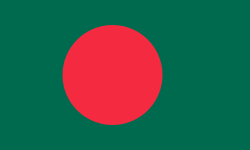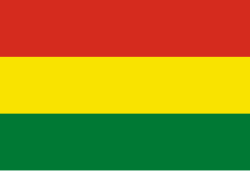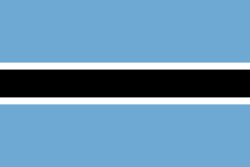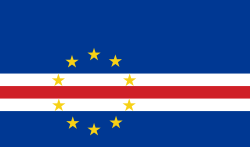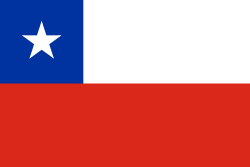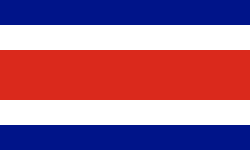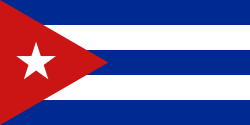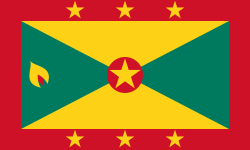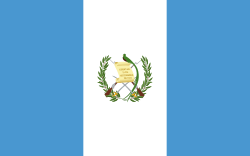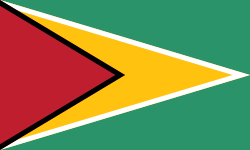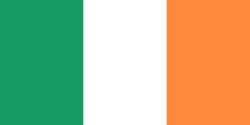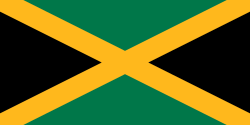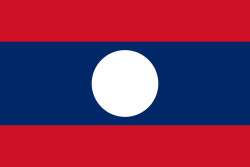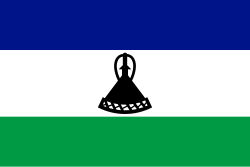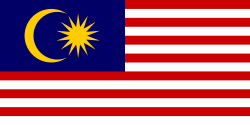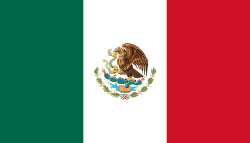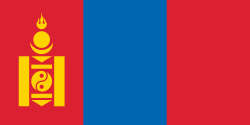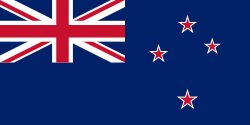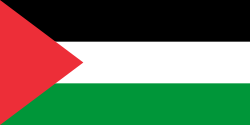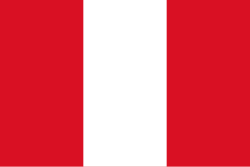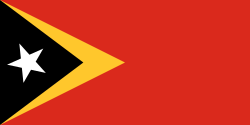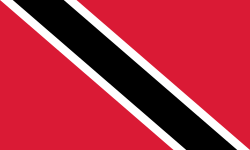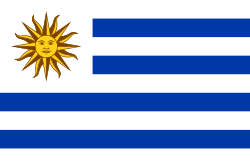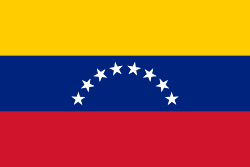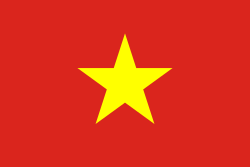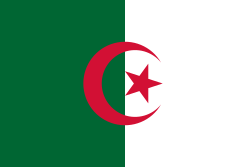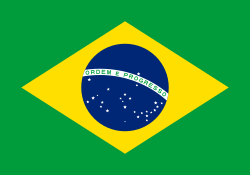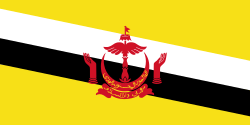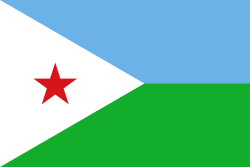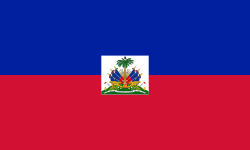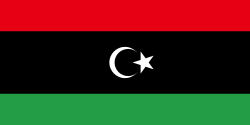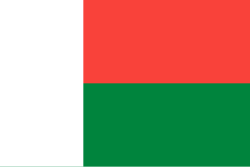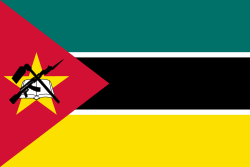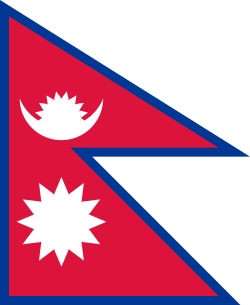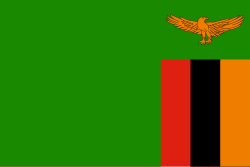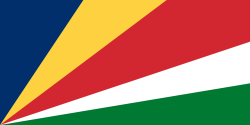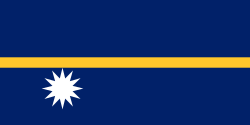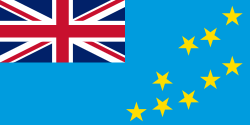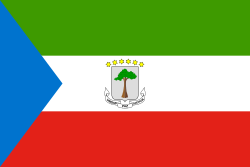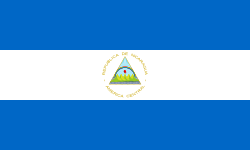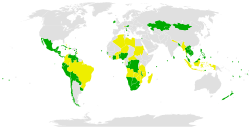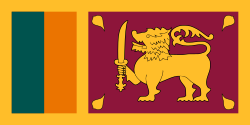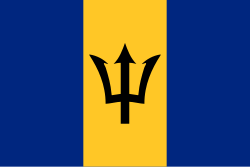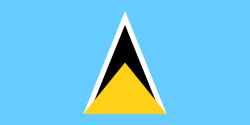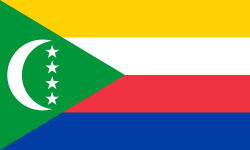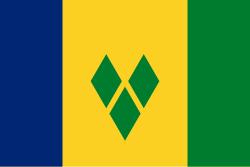Seznam účastníků Smlouvy o zákazu jaderných zbraní

Seznam účastníků Smlouvy o zákazu jaderných zbraní (TPNW) zahrnuje státy, které podepsaly a ratifikovaly nebo přistoupily k Smlouvě o zákazu jaderných zbraní. Je to multilaterární smlouva, která staví jaderné zbraně mimo zákon.
Dne 20. září 2017 byla smlouva otevřena k podpisu.[1] Podle článku 15 smlouvy vstoupila v platnost dne 22. ledna 2021 poté, co byla ratifikována 50 státy.[1][2] Státy, které smlouvu do té doby nepodepsaly, k ní mohou pouze přistoupit.
Celkem 197 států se může stát smluvními stranami Smlouvy o zákazu jaderných zbraní, včetně všech 193 členských států Organizace spojených národů, Cookových ostrovů, Svatého stolce, státu Palestiny a Niue. Ke dni 15. ledna 2024 smlouvu ratifikovalo nebo k ní přistoupilo 70 států, naposledy Srí Lanka a Svatý Tomáš a Princův ostrov.[1]
Smluvní státy
Podle databáze smluv spravované Úřadem OSN pro záležitosti odzbrojení má k 22. září 2022 TPNW 70 účastníků: 66 států ji ratifikovalo a další 4 k ní přistoupily.[1]
| Stát[3][1] | Podepsáno | Uloženo | Typ |
|---|---|---|---|
| 26. září 2018 | 25. listopadu 2019 | Ratifikace | |
| 20. září 2017 | 8. května 2018 | Ratifikace | |
| 20. září 2017 | 26. září 2019 | Ratifikace | |
| 6. února 2020 | 19. května 2020 | Ratifikace | |
| 26. září 2018 | 11. prosince 2020 | Ratifikace | |
| 16. dubna 2018 | 6. srpna 2019 | Ratifikace | |
| 26. září 2019 | 15. července 2020 | Ratifikace | |
| 20. září 2017 | 20. června 2022 | Ratifikace | |
| 9. ledna 2019 | 22. ledna 2021 | Ratifikace | |
| 20. září 2017 | 23. září 2021 | Ratifikace | |
| 4. září 2018 | Přistoupení | ||
| 20. září 2017 | 19. února 2021 | Ratifikace | |
| 20. září 2017 | 22. září 2022 | Ratifikace | |
| 20. září 2017 | 17. května 2022 | Ratifikace | |
| 20. září 2017 | 5. července 2018 | Ratifikace | |
| 20. září 2017 | 23. března 2022 | Ratifikace | |
| 20. září 2017 | 30. ledna 2018 | Ratifikace | |
| 26. září 2019 | 18. října 2019 | Ratifikace | |
| 7. června 2018 | 22. září 2022 | Ratifikace | |
| 20. září 2017 | 25. září 2019 | Ratifikace | |
| 20. září 2017 | 30. ledna 2019 | Ratifikace | |
| 20. září 2017 | 7. července 2020 | Ratifikace | |
| 20. září 2017 | 26. září 2018 | Ratifikace | |
| 26. září 2019 | 20. června 2022 | Ratifikace | |
| 20. září 2017 | 13. června 2022 | Ratifikace | |
| 26. září 2018 | 15. prosince 2021 | Ratifikace | |
| 20. září 2017 | 20. září 2017 | Ratifikace | |
| 20. září 2017 | 20. září 2017 | Ratifikace | |
| 20. září 2017 | 24. října 2020 | Ratifikace | |
| 20. září 2017 | 6. srpna 2020 | Ratifikace | |
| 8. prosince 2017 | 23. října 2020 | Ratifikace | |
| 2. března 2018 | 29. srpna 2019 | Ratifikace | |
| 20. září 2017 | 26. září 2019 | Ratifikace | |
| 21. září 2017 | 26. září 2019 | Ratifikace | |
| 26. září 2019 | 6. června 2020 | Ratifikace | |
| 20. září 2017 | 29. června 2022 | Ratifikace | |
| 20. září 2017 | 30. září 2020 | Ratifikace | |
| 26. září 2019 | 26. září 2019 | Ratifikace | |
| 25. srpna 2020 | 21. září 2020 | Ratifikace | |
| 20. září 2017 | 16. ledna 2018 | Ratifikace | |
| 10. prosince 2021 | Přistoupení | ||
| 8. prosince 2017 | 20. března 2020 | Ratifikace | |
| 22. listopadu 2019 | 23. října 2020 | Ratifikace | |
| 20. září 2017 | 31. července 2018 | Ratifikace | |
| 22. září 2017 | 19. července 2018 | Ratifikace | |
| 20. září 2017 | 6. srpna 2020 | Ratifikace | |
| 6. srpna 2020 | Přistoupení | ||
| 20. září 2017 | 3. května 2018 | Ratifikace | |
| 20. září 2017 | 22. března 2018 | Ratifikace | |
| 20. září 2017 | 11. dubna 2019 | Ratifikace | |
| 20. září 2017 | 23. ledna 2020 | Ratifikace | |
| 20. září 2017 | 23. prosince 2021 | Ratifikace | |
| 20. září 2017 | 18. února 2021 | Ratifikace | |
| 20. září 2017 | 26. září 2018 | Ratifikace | |
| 20. září 2017 | 26. září 2018 | Ratifikace | |
| 26. září 2018 | 9. července 2021 | Ratifikace | |
| 20. září 2017 | 25. února 2019 | Ratifikace | |
| 27. září 2018 | 23. ledna 2019 | Ratifikace | |
| 26. září 2019 | 9. srpna 2020 | Ratifikace | |
| 8. prosince 2017 | 31. července 2019 | Ratifikace | |
| 20. září 2017 | 15. ledna 2024 | Ratifikace | |
| 19. září 2023 | Přístoupení | ||
| 20. září 2017 | 20. září 2017 | Ratifikace | |
| 26. září 2018 | 20. června 2022 | Ratifikace | |
| 26. září 2019 | 26. září 2019 | Ratifikace | |
| 20. září 2017 | 12. října 2020 | Ratifikace | |
| 20. září 2017 | 25. července 2018 | Ratifikace | |
| 20. září 2017 | 26. září 2018 | Ratifikace | |
| 20. září 2017 | 27. března 2018 | Ratifikace | |
| 22. září 2017 | 17. května 2018 | Ratifikace |
* Nečlenské pozorovatelské státy Organizace spojených národů[4]
Signatářské státy
Od ledna 2023 podepsalo, ale neratifikovalo TPNW následujících 27 států.[1]
| Stát[1] | Podepsal |
|---|---|
| 20. září 2017 | |
| 27. září 2018 | |
| 22. září 2022 | |
| 20. září 2017 | |
| 26. září 2018 | |
| 22. září 2022 | |
| 20. září 2017 | |
| 3. srpna 2018 | |
| 9. ledna 2023 | |
| 22. září 2022 | |
| 20. září 2017 | |
| 22. září 2022 | |
| 20. září 2017 | |
| 20. září 2017 | |
| 20. září 2017 | |
| 20. září 2017 | |
| 18. srpna 2020 | |
| 26. září 2018 | |
| 20. září 2017 | |
| 9. prosince 2020 | |
| 22. září 2022 | |
| 22. července 2020 | |
| 26. září 2019 | |
| 20. září 2017 | |
| 26. září 2019 | |
| 4. prosince 2020 |
Reference
V tomto článku byl použit překlad textu z článku List of parties to the Treaty on the Prohibition of Nuclear Weapons na anglické Wikipedii.
- ↑ a b c d e f g h Disarmament Treaties Database: Treaty on the Prohibition of Nuclear Weapons [online]. [cit. 2021-03-03]. Dostupné online. (anglicky)
- ↑ Článek 15, Smlouva o zákazu jaderných zbraní. Wikisource.
- ↑ Treaty on the Prohibition of Nuclear Weapons [online]. United Nations [cit. 2021-11-11]. Dostupné online. (anglicky)
- ↑ Non-member States [online]. [cit. 2020-10-25]. Dostupné online. (anglicky)
Média použitá na této stránce
| Flag of Bolivia* | |
|---|---|
| country | Template:I18n/Republic of Bolivia |
| used by | Bolivia |
| from | 1851 |
| until | Present |
| created by | Government of Bolivia |
| format | 15:22 |
| shape | rectangular |
| colours | červená, žlutá, zelená
flag has 3 horizontal stripes |
| other characteristics | A horizontal tricolor of red, yellow and green. |
Při zobrazení tohoto souboru lze snadno přidat orámování
Flag of the Ivory Coast, written by Jon Harald Søby, modified by Zscout370. The colors match to what is reported at http://fotw.vexillum.com/flags/ci.html.
The flag of the Dominican Republic has a centered white cross that extends to the edges. This emblem is similar to the flag design and shows a bible, a cross of gold and 6 Dominican flags. There are branches of olive and palm around the shield and above on the ribbon is the motto "Dios,Patria!, Libertad" ("God, Country, Freedom") and to amiable freedom. The blue is said to stand for liberty, red for the fire and blood of the independence struggle and the white cross symbolized that God has not forgotten his people. "Republica Dominicana". The Dominican flag was designed by Juan Pablo Duarte, father of the national Independence of Dominican Republic. The first dominican flag was sewn by a young lady named Concepción Bona, who lived across the street of El Baluarte, monument where the patriots gathered to fight for the independence, the night of February 27th, 1844. Concepción Bona was helped by her first cousin María de Jesús Pina.
The flag of the Dominican Republic has a centered white cross that extends to the edges. This emblem is similar to the flag design and shows a bible, a cross of gold and 6 Dominican flags. There are branches of olive and palm around the shield and above on the ribbon is the motto "Dios,Patria!, Libertad" ("God, Country, Freedom") and to amiable freedom. The blue is said to stand for liberty, red for the fire and blood of the independence struggle and the white cross symbolized that God has not forgotten his people. "Republica Dominicana". The Dominican flag was designed by Juan Pablo Duarte, father of the national Independence of Dominican Republic. The first dominican flag was sewn by a young lady named Concepción Bona, who lived across the street of El Baluarte, monument where the patriots gathered to fight for the independence, the night of February 27th, 1844. Concepción Bona was helped by her first cousin María de Jesús Pina.
The Flag of Vatican City State, as per the 2023 w:en:Fundamental Law of Vatican City State, reproducing Annex A which contains the official depiction of this version. See 2023 Fundamental Law of Vatican City State, art. 23, n. 1.
This 2023 flag is very similar to the flag used in the 1929 Fundamental Law of Vatican City State, see here, p. 35. Thus, it is in the public domain.
Note: The color selected is «turquoise blue» (the color mentioned in the decree), as defined by Pantone.
Zelený pruh má znázorňovat většinové katolické obyvatelsto Irska, oranžový pruh reprezentuje protestantskou menšinu a bílý pruh uprostřed znázorňuje mír a harmonii mezi nimi.
Flag of Jamaica. “The sunshine, the land is green, and the people are strong and bold” is the symbolism of the colours of the flag. GOLD represents the natural wealth and beauty of sunlight; GREEN represents hope and agricultural resources; BLACK represents the strength and creativity of the people. The original symbolism, however, was "Hardships there are, but the land is green, and the sun shineth", where BLACK represented the hardships being faced.
Flag of Laos
Flag of Namibia
Used color: National flag | South African Government and Pantone Color Picker
| zelená | rendered as RGB 0 119 73 | Pantone 3415 C |
| žlutá | rendered as RGB 255 184 28 | Pantone 1235 C |
| červená | rendered as RGB 224 60 49 | Pantone 179 C |
| modrá | rendered as RGB 0 20 137 | Pantone Reflex Blue C |
| bílá | rendered as RGB 255 255 255 | |
| černá | rendered as RGB 0 0 0 |
The national flag of Kingdom of Thailand; there are total of 3 colours:
- Red represents the blood spilt to protect Thailand’s independence and often more simply described as representing the nation.
- White represents the religion of Buddhism, the predominant religion of the nation
- Blue represents the monarchy of the nation, which is recognised as the centre of Thai hearts.
Vlajka Angoly
The national and official state flag of Haiti; arms obtained from File:Coat of arms of Haiti.svg. The civil flag can be found at here.
bendera Indonesia
Flag of Liechtenstein
Flag of Burkina Faso
The national flag of Nauru. Pantone 280c (Blue) and Pantone 123c (Yellow). On Pantone's official website these colours have the hexadecimal codes of #012169 and #FFC72C.
Flag of Maldives. The colours used are Pantone 186 C for red and Pantone 348 C for green.
The proportions of this flag are 3:2; however, there is no official definition for the correct proportions and also 5:3 is widely used.
Flag of São Tomé and Príncipe

